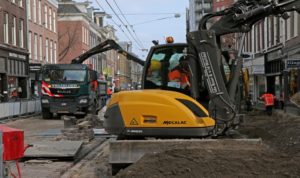The designing of physical structures, including buildings is important. This is because schools, offices, houses, and hospitals, among others, have all been structured by architectures. Having basic knowledge and skills about architecture is important because it helps an individual to come up with what a client requires, in turn increasing client satisfaction. Architecture does not only consist of planning and designing a building, but is also involved in micro-level of construction, which involves construction and furniture details. Geographic Information System has various uses especially in the research and practice of architecture. The uses vary from urban and community planning to the selection of a site. GIS adds more value to the architectural field in so many ways, some of which include the following;
1. Development Planning
The society and citizens as a whole find happiness when smart development, planning and understanding the bigger picture of a project has been put into consideration. The incorporation of GIS in this sector is essential because it helps in the planning of various projects, which are intended for development purposes. In addition to that, the Geographic Information System also helps the community in understanding why developing urban centers is important.
2. Drawing the line of sight
Everyone has at one point experienced obstruction from a perfect view of beautiful sceneries, which is caused by tall buildings around the area. This usually means that the architectural work was not done well and the line of sight was not considered. A GIS helps in the planning of high-rise buildings, which do not cause any form of obstruction from viewing the sceneries. With the use of Geographic Information Systems, architectures have an easy time planning the line of sight so that tall buildings do not cause obstruction to important features and horizons.
3. Exposure to Noise
Too much noise coming from the environment causes too much distraction to the people living around the given area. These types of noises can come from the traffic, human beings and even activities, which take place in the neighborhood. Urban mobility plans have been put in place and they come with special considerations for the impacts of environmental noise. This is effectively done using OrbisGIS. Urban planning is done and high-rise buildings are designed and positioned in such a way that the building does not cause any interference to the environment. This is done with the help of Geographic Information Systems.
4. Pedestrian Behavior
How pedestrians move and behave on the roads depends on architectural structures and signs. Determining whether a city is organized or not and the movements of the pedestrians and their behavior in the city depends on how the relevant structures have been constructed. For instance, a city, which is not organized, will experience overcrowding both on the roads and on the sidewalks. This is because there is no specific direction for vehicles and human beings. This can, in turn, increase the number of accidents, which occur in a month or a year. However, when architectures include Geographic Information Systems in their work, they are able to determine the movements of pedestrians and vehicles. This helps in bringing order and creating an artistic impression of a city.
5. Availability of Parking Space
One challenge, which many people encounter, especially those who are in a busy work environment, is the availability of a parking space. This can be so frustrating especially when you are forced to incur additional expenses in paying for a parking space. Organizing parking space and ensuring that there is enough space for parking is done by collecting the percentage of the spaces occupied versus the search time. This gives a rough estimate of how much space is available and at what time. The application of GIS in determining the availability of parking is essential because it helps in defining the number of parking spaces, which are available, and the time that is required to locate a parking space.
6. Noise reduction in Urban Environments
Urban areas are most likely to experience noise pollution as compared to any other area. Noise pollution in urban areas is caused by different activities, and it is only important that architectures determine how to solve this problem. Modeling a third-dimensional data is essential because it helps in finding answers to how citizens in the urban areas are harmed by noise pollution and the barriers to use in moderating such noises. The application of GIS helps in providing a proper picture of the actual area where citizens are most likely to suffer from noise pollution, and come up with different measures to avoid such occurrences.
7. Analysis of a Shadow
Determining the amount of shadow, which will be cast in a pre-construction site, onto its surroundings is perfectly done using a Bentley map. Creating the exact impression is difficult, but with the use of a Geographic Information System, this has been made much easier. GIS gives the exact impression of the amount of shadow that will be cast in a pre-construction phase of all the projects to be done.
8. Urban Planning
Geographic Information System is an essential tool in urban planning because it is used as an analytic and modeling tool. In addition to that, GIS can be applied to a variety of problems from relating database structures to analyzing simple and complex models. Furthermore, the Geographic Information System is used in conducting a feasibility study of a location, which is intended for a specific purpose. For instance, GIS can be used in determining if a given location is suitable for building a bridge or a dam. Moreover, monitoring smaller structures such as hospitals and schools is important and can be easily done with the help of a Geographic Information System.
9. Planning
GIS is also incorporated in environmental planning and has been proved useful and essential for performing such tasks. It is also important to determine the suitability of land and to know the level and nature of the land’s contamination. This can be done with the aid of a Geographic Information System. This enabled architectures to know which land to erect their structure on an also determine the area for the disposal and treatment of wastes.



